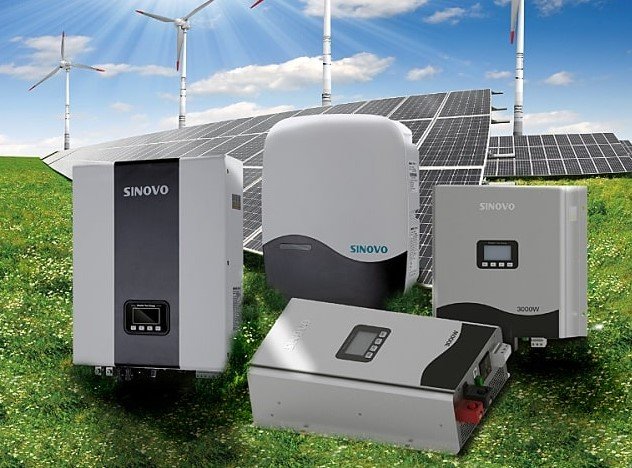Introduction
Air conditioners have become a necessity in many parts of the world, including Pakistan, where summers are extremely hot. Among different sizes, the 1-ton inverter AC is widely used for bedrooms, small living rooms, and office cabins. A common question is: how many watts does a 1-ton inverter AC consume? To answer this, we need to look at cooling capacity, inverter technology, and other factors. Understanding 1 ton inverter ac watts not only helps in calculating electricity bills but also assists in choosing the right backup power system like UPS, solar panels, or generators.
What Does “1 Ton” Mean in an AC?
The term “1 ton” refers to the cooling capacity of the air conditioner, not its weight. A 1-ton AC has the ability to remove approximately 12,000 BTUs (British Thermal Units) of heat per hour. This makes it suitable for rooms sized around 120–150 square feet, depending on insulation and sunlight exposure.
Average Wattage of a 1 Ton Inverter AC
On average, a 1-ton inverter AC consumes between 900 to 1200 watts per hour, depending on various conditions. However, unlike traditional ACs, inverter models do not constantly run at full power. Instead, they adjust their compressor speed according to the room’s cooling needs, which reduces energy consumption.
For example:
-
At startup, the AC may consume around 1200W.
-
Once the desired temperature is reached, consumption drops to 500–800W.
-
During continuous operation, inverter ACs save 30–40% more energy compared to non-inverter models.
Factors That Affect Power Consumption
The actual wattage of a 1-ton inverter AC depends on several factors:
-
Room Size – A larger room requires more energy to cool compared to a smaller one.
-
Temperature Setting – Lower temperature settings (e.g., 16–18°C) increase power consumption, while moderate settings (24–26°C) save energy.
-
Insulation & Sunlight – Poorly insulated rooms or rooms exposed to direct sunlight require more cooling.
-
Usage Duration – Running the AC for longer hours naturally increases total power consumption.
-
AC Brand & Model – Different brands use different technologies, which can affect efficiency.
-
Maintenance – Dirty filters, blocked vents, or low refrigerant levels force the AC to consume more watts.
Why Choose an Inverter AC Over Non-Inverter?
-
Energy Efficiency – Inverter ACs consume less power by adjusting compressor speed.
-
Stable Cooling – They maintain a consistent temperature instead of frequent on/off cycles.
-
Lower Bills – Reduced wattage usage directly lowers monthly electricity bills.
-
Longer Lifespan – Smooth operation reduces stress on components.
-
Works Better with Backup Power – Lower wattage makes them compatible with solar systems, UPS, and generators.
How to Calculate Power Consumption of a 1 Ton Inverter AC
To calculate monthly electricity usage:
-
Formula: Wattage × Hours Used Per Day × Number of Days / 1000 = kWh (units of electricity)
For example:
-
Wattage: 1000W (1kW)
-
Usage: 8 hours/day
-
Days: 30
= 1000 × 8 × 30 / 1000 = 240 kWh per month
If the electricity rate is PKR 50 per unit, then the cost = 240 × 50 = PKR 12,000 per month.
(Actual cost may vary depending on efficiency, weather, and usage patterns.)
Tips to Reduce Power Consumption of a 1 Ton Inverter AC
-
Keep the AC temperature between 24–26°C for maximum efficiency.
-
Regularly clean or replace filters.
-
Use curtains or blinds to block direct sunlight.
-
Ensure proper insulation in the room.
-
Service the AC periodically to maintain refrigerant levels.
-
Turn on energy-saving mode if available.
Using Solar Power for a 1 Ton Inverter AC
Many households in Pakistan now run their inverter ACs on solar power. A 1-ton inverter AC usually requires:
-
3–4 solar panels of 450–550W each
-
Inverter (2kW or above)
-
Battery backup (optional, for night use)
This setup allows significant savings on electricity bills and provides cooling even during load-shedding.
Conclusion
To summarize, the average 1 ton inverter ac watts range between 900 to 1200W, with actual consumption depending on temperature settings, room size, insulation, and usage habits. Inverter technology ensures that the wattage drops once the desired temperature is achieved, making it a highly energy-efficient choice.
By following energy-saving practices and considering solar integration, you can enjoy comfort while keeping your bills under control. For households and small offices, a 1-ton inverter AC is not only practical but also a cost-effective long-term investment.








